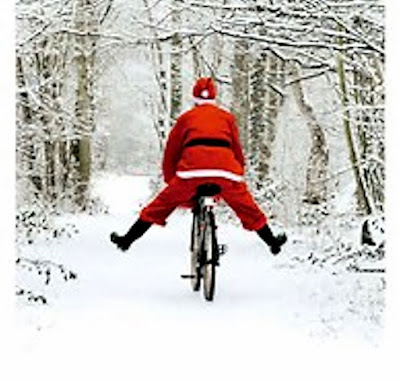Community recognition
I am not one to brag by blog. But until last week I
would have had no idea what a Civic Award looked like even if I tripped over one.
Luckily rather than tripping over, I was presented with one by Lianne Dalziel,
mayor of Christchurch. It was in recognition of my efforts in getting the New
Zealand World Peace Bell to Christchurch. It has been a prominent feature of
our Botanic Gardens for 11 years. It was one of about 40 bells worldwide
gifted, from Japan, to countries that had contributed significantly to world
peace. Along with being a venue for peace-related gatherings, the bell site is
also a meeting place and sanctuary in Christchurch Botanic Gardens. I had been nominated for the award by David
Bolam-Smith.

I became interested in the World Peace Bell while a
reporter on the Press newspaper. I
discovered a reference to a mayor of Shikoku, Japan, Chiyoji Nakagawa, who in
1954 had a huge temple bell cast using coins from member countries of the
newly-formed United Nations. The bell was subsequently placed in the UN
forecourt, New York, mounted on soil from Hiroshima and Nagasaki. Nakagawa’s
message in gifting the bell was; what happened to my country should never
happen to any other.
The success of the World Peace Bell was such that further
bells were cast and gifted to countries that had made notable efforts towards
attaining world peace.
I considered the actions of Mayor Nakagawa were brave.
I then thought similarly of the actions of New Zealand Prime Minister, David
Lange, initiating New Zealand’s anti-nuclear policy 30 years ago.
I visited my first World Peace Bell in Cowra when on
leave to write a story about the NSW town’s annual cherry blossom festival. The
Cowra bell is one symbol commemorating friendship between Japan and Australia
resulting from the 1944 tragedy of the Cowra prisoner of war breakout during
which some 200 Japanese were killed by Australian gunfire. Four Australian
guards died. Many share the same Cowra cemetery.
During the 2001 Japanese winter I had an opportunity
to travel to Soya misaki, northernmost tip of Japan, to visit a World Peace
Bell. A temperature gauge at Soya misaki
recorded -22 Celsius. Quite a breeze was blowing. The nearest landmass is
Siberia.
My subsequent story in the Press was sent to the World Peace Bell Association in Tokyo. The
organisation distributed the story to worldwide World Peace Bell chapters.
This provided the opportunity to start negotiations to
fulfil an ambition to have a World Peace Bell gifted to New Zealand. Being a
keen cycling traveller, I offered, as part of the deal, to cycle the length of
Japan.
In the meantime I found out that the World Peace Bell
Association had previously approached Wellington with the idea of gifting New
Zealand a bell. Wellington City
principals had little enthusiasm for the gift.
Capital cities were preferred locations. But I knew
the Australian World Peace Bell did not go to the capital.
I also knew Christchurch, in 2002, had been declared
New Zealand’s first Peace City. The concept was founded when a Christchurch
peace activist, Kate Dewes, had a Peace City submission accepted by the UN
Security Council. Also many of New Zealand’s peace promoters were Christchurch
people.
I was advised that if he could swing the World Peace
Bell for Christchurch the then mayor Gary Moore and his council would support
it.
I signed the agreement with WBPA CEO, Tomijiro Yoshida
in Tokyo on August 21, 2004.
Next day with my partner, Haruko, we flew with bicycles
and gear (brought from New Zealand) to Wakkanai City. We were taken 30 km to
the cape by a group from Wakkanai City Hall. Once there, we unpacked and
assembled our bikes.
Following a ringing of the Soya misaki World Peace
Bell the 4200 km journey began. It was our first of many bicycle journeys
outside New Zealand.
We had allotted a three month stay in Japan. That was
sufficient time to ride to Soya Sata, southern tip of Honshu (69 days) and a
ride around southern Kyushu to Kagoshima City, then part of Shikoku and finally
to Kurashiki (sister city of Christchurch), finishing the journey in Osaka.
Among highlights was the Atomic bomb museum of
Nagasaki. There, I spotted a panel listing countries that had made significant
efforts towards world peace.
To my delight New Zealand was Number One.
That evening I opened an email from Barbara August, of
Christchurch City Council’s International Relations advising the New Zealand
World Peace Bell had been cast was to be loaded onto the Japanese Peace Boat making
its first voyage to New Zealand, calling at Auckland.
David Given, then curator of Christchurch Botanic
Gardens, suggested the site for the bell. He welcomed an item from Japan saying
our Botanic Gardens represented a society descended from Britain.
In the 21st Century that was no longer the
case. Christchurch was multi-cultural. Besides, he had Asian plants he was keen
to make use of.
A healthy camphor tree close to the World Peace Bell
grew from a cutting obtained from a camphor tree that sprung up soon after the
Nagasaki bombing on August 9, 1945.This was despite predictions nothing would
grow for at least another 70 years.
Cuttings went to several destinations. The tree lives
on in Christchurch, New Zealand.












































